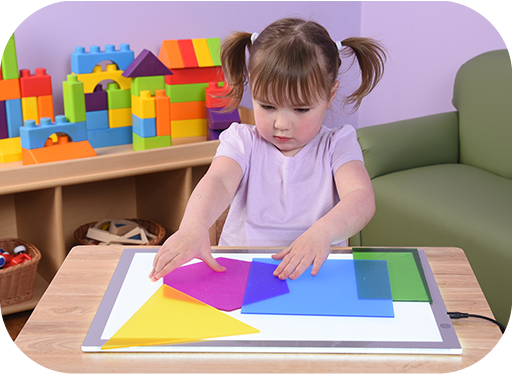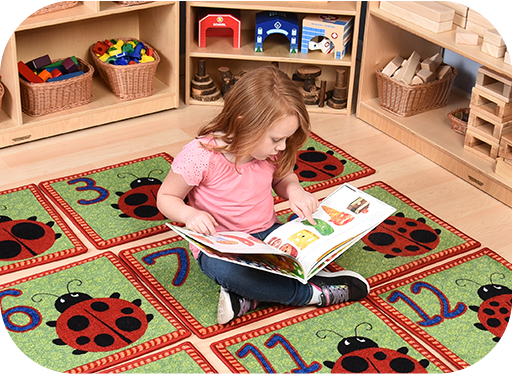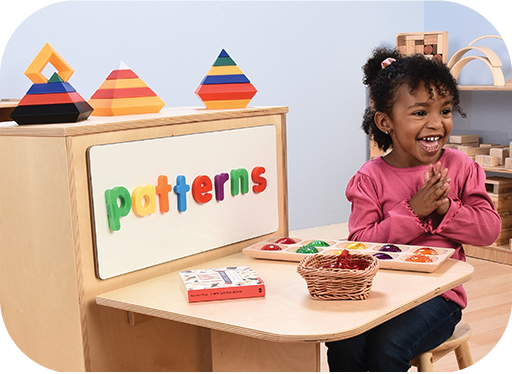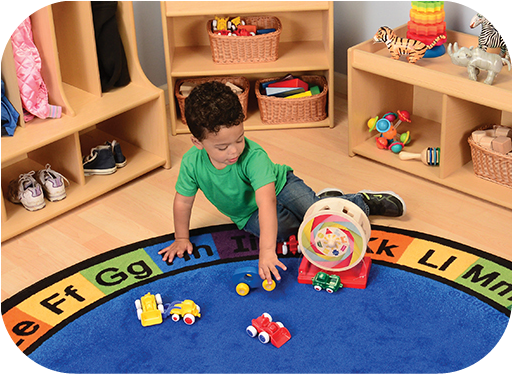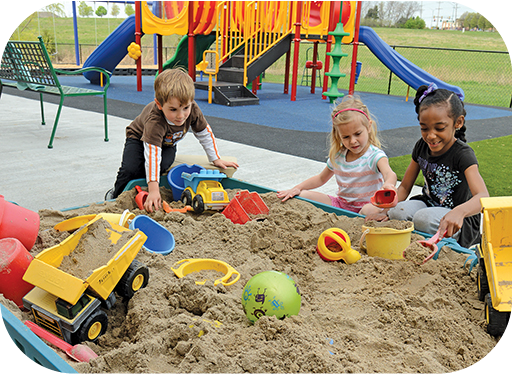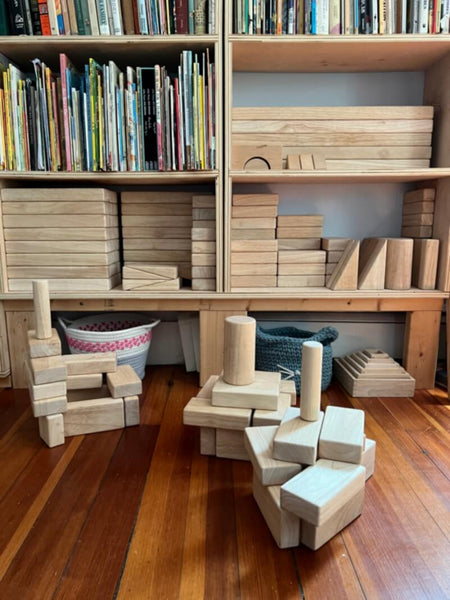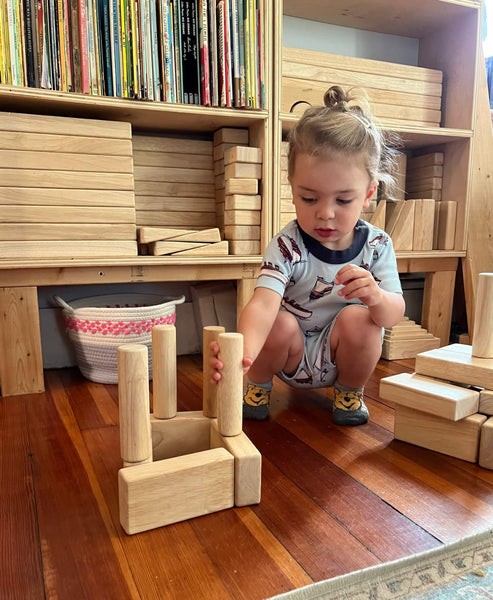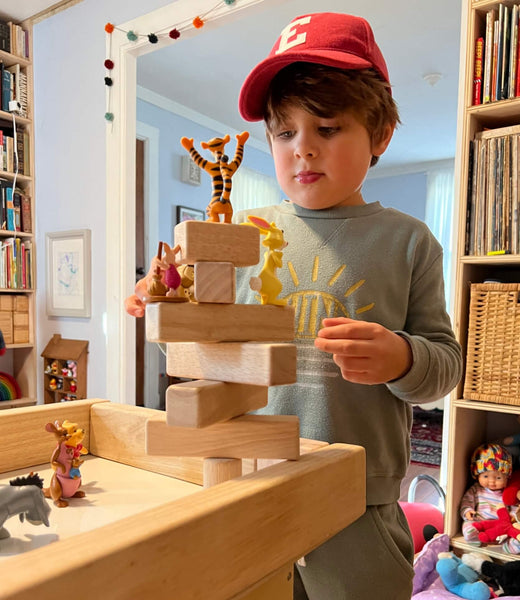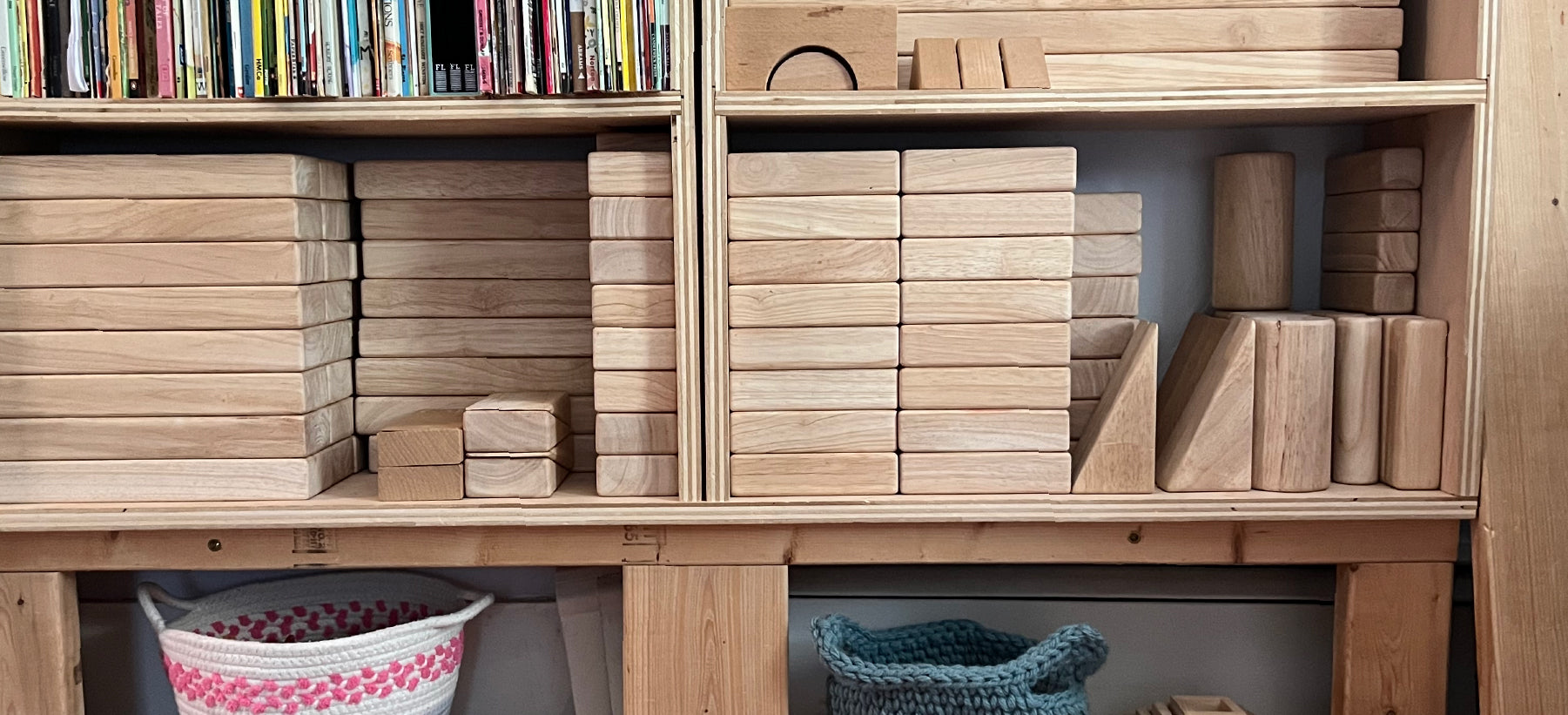
Wooden Unit Block Play: Bringing the Classic Resource Back into Play
It is well known the benefits block play brings to our early childhood programs, from encouraging mathematical skills, critical thinking, creativity, and even literacy! Blocks offer so many opportunities for open-ended play and are central in almost every learning center. Recently it seems the classic unit blocks are getting all the love from not only school settings but home settings. We could not be more excited!
video courtesy of @halfway_montessori and @everydaywitheandj
Why Unit Blocks?
It is probably no surprise that the idea of children handling various geometrical shapes made from wood came from the founder of Kindergarten himself, German educator Friedrich Froebel, way back in the 1800s. However, it was in the early 1900s when the progressive educational reformer Caroline Pratt not only created the unit blocks we know today. She was also a huge advocate for open-ended play . . . makes sense, doesn’t it?
Pratt designed the unit blocks system to be very systematic and built on the same basic standard of measurement. All blocks, except for the cylinders and curves, are created from the individual unit block via multiplication or division. By incorporating unit blocks into play, children learn that two units are the same size as a double unit, and four half units make a double! What a fantastic way to learn important math and critical thinking skills, all while being happy at play.
How to Incorporate Block Play into Your Learning Environment
As you look to incorporate block play into your learning space or even revamp your current center, remember the importance of a designated area. Having an actual block play area places value and instills a sense of focus. It doesn’t matter if it is a small space or a larger space – it could just be a special block shelf with a rug – just the fact there is a space just for blocks is enough.
Also, look at how the blocks are organized. Having them stacked according to shape or specific shelf space for certain blocks truly helps with accessibility and extends a more inviting invitation to play!
photo courtesy of @everydaywitheandj
After that, block play is easy. For timid children, it is fine to prebuild to get them started. But, once they are going, step back. It is great to ask questions from time to time to get them thinking and practice communication skills:
- "What would happen if you . . . "
- "How could you create . . . "
- "Tell me about the building you made "
- "How did you figure out how to . . ."
photo courtesy of @everydaywitheandj
From time to time, extend block play and add accessories such as literacy props, figures, cars, anything! It changes the entire dynamic, and it is fun to see where their imaginations and creativity take them.
photo courtesy of @everydaywitheandj
Why Constructive Playthings Blocks
Looking to invest in your classroom unit block set or add to your current collection? Our precision-made, selected straight-grained, kiln-dried, hardwood unit blocks are beautiful and include sanded-beveled edges that are soft and smooth, perfect for little hands. We know our blocks will stand up to the test and guarantee that if any block breaks or splinters, we will replace them at no charge!
Another pro tip! You can individually purchase any of our wooden unit blocks. This is wonderful for adding certain pieces to your collection without purchasing a whole new set.
Compare Constructive Playthings Block Sets
Excited to explore the various unit block offerings that Constructive Playthings offers? We have sets ranging from 32 pieces, ideal for a smaller home setting, to full school sets with hundreds of blocks. Be sure to visit our wooden unit block sets page to compare all we offer and learn more about additional accessories to complement your block play center.
Have a moment to share with us? Be sure to tag us and use the hashtag #constructiveinsights in your post. We’d love to potentially feature you on our social feeds and/or in an upcoming email!


